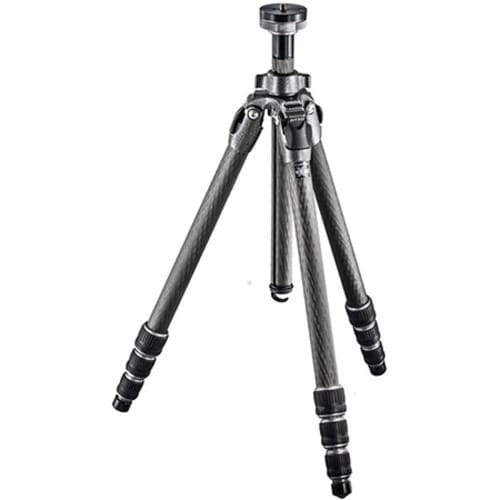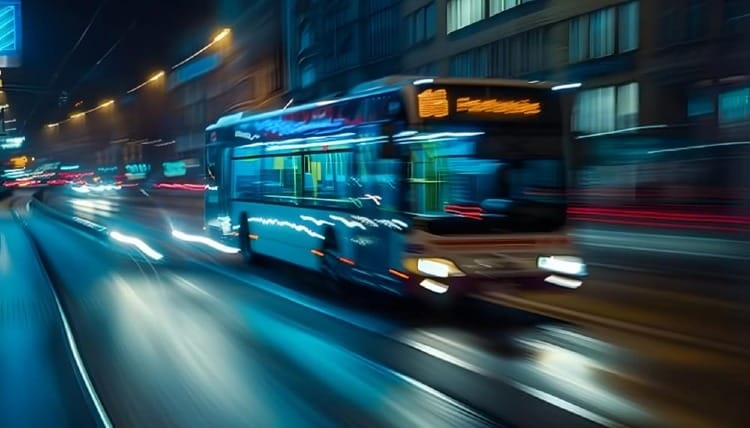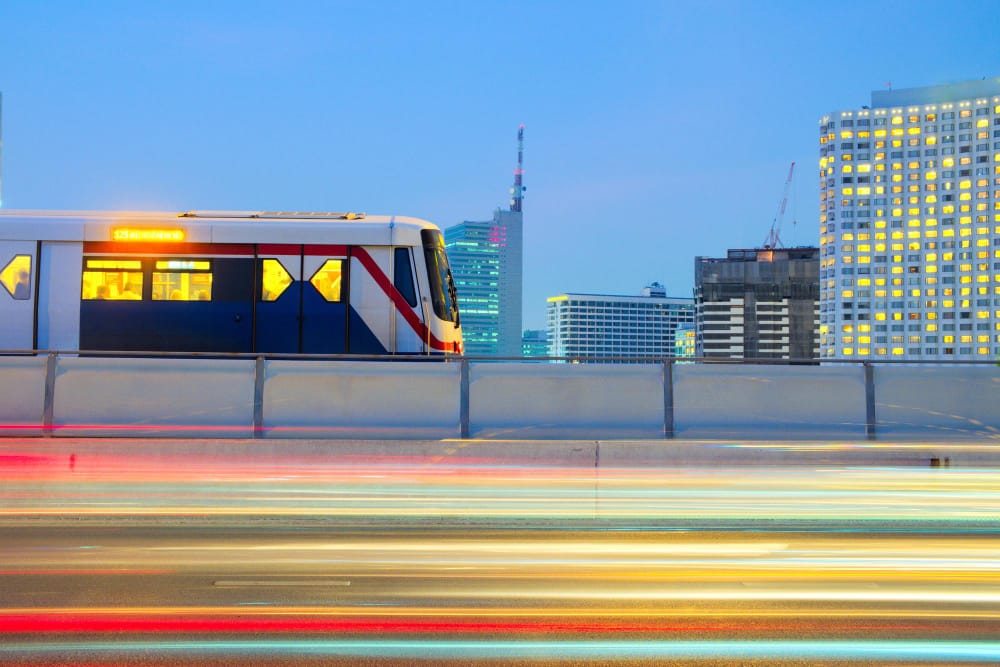Blur action photography brings still images to life. It captures movement and energy in a single frame.
Instead of freezing a moment, this technique shows the path of motion.
Photographers use slow shutter speeds to create motion blur in their shots. This method works well for fast-moving subjects like cars, athletes, or flowing water.
The camera settings allow moving objects to appear blurred, while stationary elements stay sharp.
Good composition is key in blur action photos. The photo should tell a story and draw the viewer's eye through the image.
Photographers can use motion blur to add creative flair to their work. This technique can turn ordinary scenes into dynamic, eye-catching pictures.
Understanding Shutter Speed and Motion Blur
Shutter speed plays a key role in creating motion blur in photos. It affects how movement is captured, allowing photographers to freeze action or show motion.
The Role of Shutter Speed in Photography
Shutter speed controls how long the camera sensor is exposed to light. It's measured in fractions of a second, like 1/500 or 1/30.
Faster shutter speeds let in less light but can freeze motion. Slower speeds allow more light and can show movement as blur.
Shutter speed is crucial for controlling exposure and motion effects. It works with aperture and ISO to determine the final image.
In shutter priority mode, photographers set the speed while the camera adjusts other settings. This gives control over motion blur.

Achieving the Desired Motion Blur Effect
To create motion blur, use slower shutter speeds. The exact speed depends on the subject's movement and the desired effect.
For slight blur, try 1/60 to 1/30 second. For more dramatic streaks, use 1/15 to 1 second or longer.
Capturing motion blur often requires a tripod to keep the camera steady. This ensures stationary elements stay sharp while moving objects blur.
Panning is a technique where the camera follows a moving subject. It keeps the subject sharp while blurring the background.
Slow Versus Fast Shutter Speeds
Slow shutter speeds, typically below 1/60 second, are ideal for showing motion. They create streaks of light, smooth water, or blurred crowds.
Fast shutter speeds, like 1/500 or higher, freeze action. They're great for sports, wildlife, or any fast-moving subjects.
The choice between slow and fast speeds depends on the creative goal. Slow speeds convey energy and movement. Fast speeds capture precise moments in time.
Experimenting with different speeds helps photographers find the right balance between blur and sharpness for their vision.
Camera Settings and Equipment
Getting sharp action shots requires the right camera settings and gear. Proper ISO, aperture, and shutter speed are key. Stabilization tools and filters also help capture crisp motion.
Choosing the Correct ISO Setting
ISO affects how sensitive your camera's sensor is to light. For action shots, you need a fast shutter speed. This often means using a higher ISO.
Higher ISO lets you use faster shutter speeds in low light. But it can add noise to your images. Most modern cameras handle high ISOs well.
Try to use the lowest ISO that gives you a shutter speed that is fast enough. This balances image quality and motion-stopping ability.
For outdoor sports, start around ISO 400. For indoor events, you may need ISO 1600 or higher.
Aperture: Balancing Light and Depth
Aperture controls light and depth of field. A wide aperture (low f-number) lets in more light. This allows for faster shutter speeds to freeze action.
Wide apertures also create a shallow depth of field. This can blur distracting backgrounds.
For most action shots, use the widest aperture your lens allows. This is often f/2.8 or f/4 on pro lenses.
If you need more depth of field, you may need to increase ISO to keep your shutter speed fast.
Using Tripods and Image Stabilization
Tripods and image stabilization help reduce camera shake. This is crucial for sharp images, especially with longer lenses.

A sturdy tripod keeps your camera steady. It's great for shooting from a fixed position.
For more mobility, use a monopod. It offers stability while allowing quick movements.
Many lenses and cameras have built-in image stabilization. This helps when shooting handheld. It's especially useful in low light or with longer focal lengths.
Turn off image stabilization when using a tripod. It can actually cause blur on a stable platform.
Advantages of Neutral Density Filters
Neutral density (ND) filters reduce light entering the lens. This allows for creative effects in action photography.
With an ND filter, you can use slower shutter speeds in bright light. This creates motion blur while keeping proper exposure.
ND filters let you use wide apertures in bright conditions. This maintains a shallow depth of field.
Variable ND filters offer flexibility. You can adjust light reduction without changing filters.
Use ND filters to blur waterfalls or create streaking car lights. They open up creative possibilities in action scenes.
Techniques for Capturing Motion

Motion blur photography adds excitement to images. It shows movement and speed in still photos. Different methods create unique effects.
Mastering the Panning Technique
Panning is a key skill for capturing movement in photos. The photographer moves the camera to follow a moving subject. This keeps the subject sharp while blurring the background.
To pan effectively:
- Choose a slower shutter speed (1/30s to 1/60s)
- Track the subject smoothly
- Continue the motion after pressing the shutter
Practice is crucial. Start with slower subjects like cyclists or runners. As skills improve, try faster subjects like cars or athletes.
Freezing Motion with Fast Shutter Speeds
Fast shutter speeds stop action in its tracks. This technique is great for sports and wildlife photography.
Tips for freezing motion:
- Use shutter speeds of 1/500s or faster
- Increase ISO in low light
- Choose a wide aperture for more light
- Use continuous autofocus for moving subjects
Action photography settings often require quick adjustments. Be ready to change settings as the scene changes.
Long Exposure and Light Trails
A long exposure creates dreamy, motion blur effects. It's perfect for waterfalls, traffic, and star trails.
For successful long exposures:
- Use a tripod to keep the camera steady
- Set a low ISO (100-200) for clean images
- Use neutral density filters in bright light
- Experiment with shutter speeds from 1 second to several minutes
Light trails from cars or stars can add drama to night scenes. Start with exposures of 10-30 seconds and adjust as needed.
Creative Use of Background Blur
Background blur can emphasize a subject and show speed. It's a powerful tool in sports and wildlife photography.
To create effective background blur:
- Use a wide aperture (f/2.8 or wider)
- Get close to the subject
- Increase the distance between the subject and the background
- Use a longer focal length lens
Combining background blur with other techniques can produce stunning results. Try panning with a wide aperture for a doubly blurred background.
Post-Processing and Editing

Effective post-processing enhances blur action photography. Careful editing brings out the best in dynamic images and tells a compelling visual story.
Enhancing Dynamic Images in Photoshop
Photoshop offers powerful tools for refining blur action shots. The Motion Blur filter can add a sense of speed to static elements. Adjusting levels and curves improves contrast and highlights key details.
Selective sharpening draws attention to focal points. The Radial Blur filter creates a vortex effect, emphasizing circular motion. Photographers use layer masks to apply effects selectively.
Color grading sets the mood. Vibrant hues energize sports shots, while muted tones suit artistic blur. The Camera Raw filter provides precise control over exposure, white balance, and color.
Techniques for Post-Production Storytelling
Post-production storytelling brings blur action photos to life. Cropping focuses attention on key elements and improves composition. Adjusting exposure highlights important details.
Dodging and burning direct the viewer's eye through the image. Subtle vignettes frame the action. Photographers use clone stamping to remove distractions.
Selective coloring emphasizes specific elements. Composite images combine multiple shots for dramatic effect. Photographers add text or graphics to provide context.
Noise reduction smooths out high-ISO images. Lens correction tools fix distortion. Careful retouching preserves authenticity while enhancing visual impact.
Different Applications of Action Photography
Action photography captures dynamic movement in various settings. It freezes exciting moments or creates artistic blurs to convey speed and motion. Each type of action shot requires specific techniques and equipment.

Sports and Automotive Action
Sports and automotive photography are prime areas for action shots. Fast shutter speeds freeze athletes or vehicles in mid-motion, capturing peak moments of intensity. For sports, use continuous autofocus to track moving subjects. In automotive photography, panning techniques create a sense of speed.
Timing is crucial. Anticipate key moments in a game or race. Position yourself for the best angles. Use burst mode to capture rapid sequences of action.
Lighting can be tricky in these scenarios. Outdoor sports benefit from natural light, but indoor venues may require higher ISO settings. For car photography, the golden hour provides warm, dramatic lighting.
Urban and Landscape Motion
Urban and landscape photography offers unique opportunities for creative motion blur. Slow shutter speeds can transform city scenes into streaks of light from passing cars or bustling pedestrians.
In landscapes, moving water or clouds become silky smooth with long exposures. Use a tripod for sharp results. Neutral density filters help achieve longer exposures in bright conditions.
Experiment with different shutter speeds to find the right balance of blur and sharpness. Start with 1/15 second for urban scenes and several seconds for landscapes.
Wildlife and Adventure Shots
Wildlife and adventure photography combine action with unpredictable subjects.
Fast shutter speeds are essential to freeze animals in motion or capture high-energy sports like mountain biking or rock climbing.
Patience and preparation are key.
Study animal behavior to anticipate movements. For adventure shots, scout locations in advance and plan your compositions.
Use telephoto lenses for wildlife to maintain a safe distance.
Wide-angle lenses work well for adventure sports, capturing the subject and their environment.
Continuous shooting mode helps catch split-second moments.
Be ready to adjust settings quickly as lighting and subjects change.
Practice and persistence lead to stunning results in these challenging fields.
Thank you for visiting our site and being part of this journey with us! We rely on the generous support of visitors like you to continue providing high-quality. Your donation, no matter the size, helps us maintain the website and create more valuable resources for everyone.


